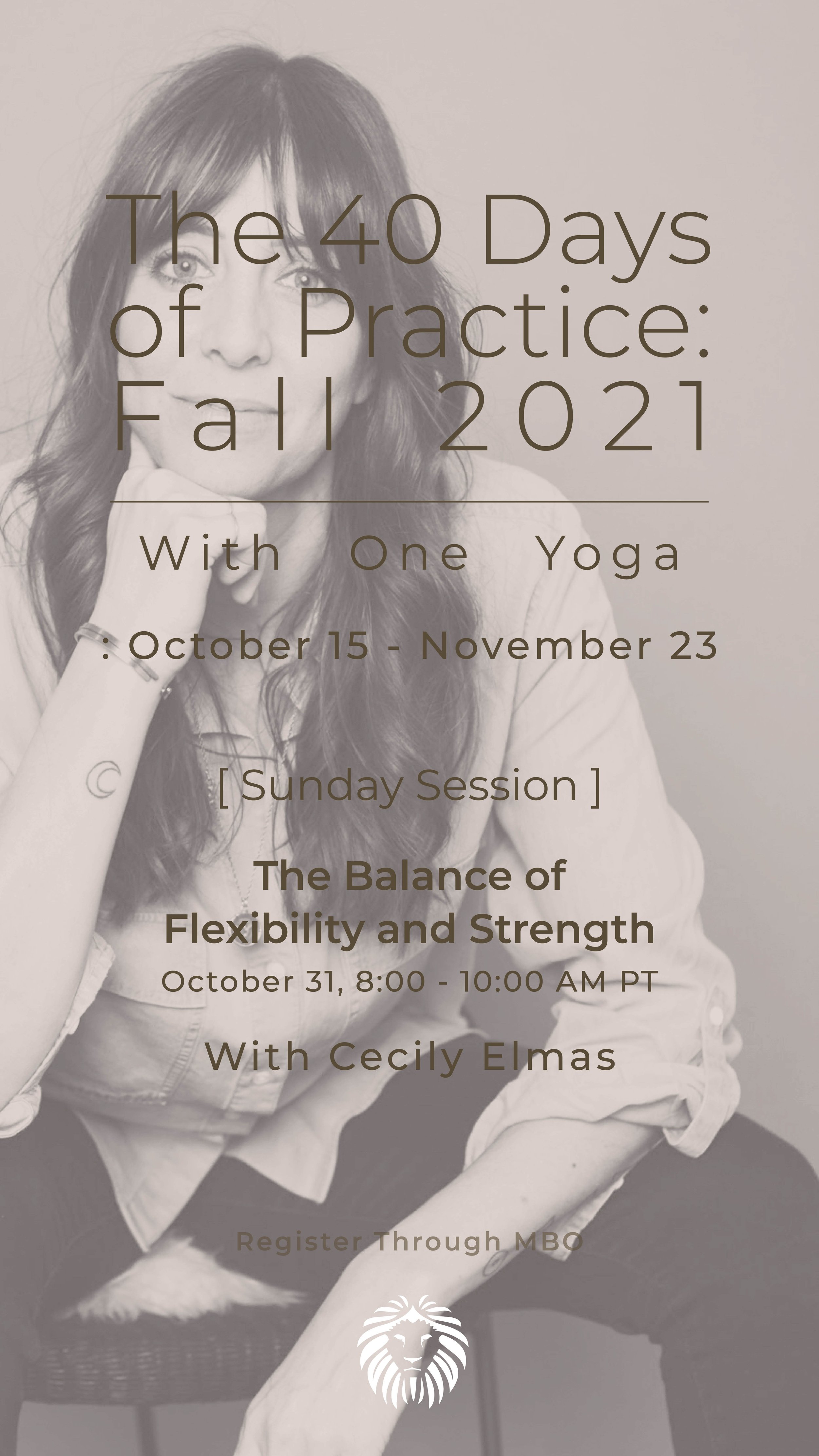Day 10: October 24
Kriya Yoga / Yoga of Action
God grant me the courage to accept the things I cannot change (Ishvara Pranidhana);
courage to change the things I can (Tapas);
and wisdom to know the difference (Svadyaya).
In The Yoga Sutras compiled by the Sage Patanjali, we have a great gift. Patanjali, who is a relatively unknown, and much speculated-about figure, drew on ancient and sacred wisdom to put together a perfect guide to Yoga. Split into four Padas or books, we have a treatise on what yoga is, how to practice it, what the results will be, and finally, what it is like on the other side. In the second book, Patanjali outlines the path of practice with a look at the immediate effects. We have been, as we usually do when referring to practice structure from Patanjali, working with his Ashtanga Yoga instructions or the Eight Limbed Path. We have the Yamas and Niyamas (which I have been presenting all week) followed by Asana and Pranayama (the main focus of our modern approach) followed by Pratyahara, Dharana, Dhyana, and Samadhi (which is a yogis stated goal).
While this is a perfect vehicle for our yoga within which we still have plenty of work to do, it is not the first format that Patanjali presents. To start and as a foundation and launching pad for our journey to Oneness, we are prescribed Kriya Yoga.
Yoga Sutra 2.1 / tapah svadhyaya ishvara-pranidhana kriya-yogah
Kriya Yoga has three parts: Tapas (training and purifying the senses), Svadyaya (self-study of a wisdom tradition), and Ishvara Pranidhana (devotion and letting go into the creative source from which we emerged).
Here we see an earlier mention of the last 3 Niyamas we covered this week; Tapas, Svadyaya, and Ishvara Pranidhana. Patanjali’s work is pretty terse and he does not repeat himself very often. So to see these guidances more than once highlights their importance. This is where he recommends we begin and he highlights the importance of the effects of Kriya Yoga.
Yoga Sutra 2.2 / samadhi bhavana arthah klesha tanu karanarthah cha
Kriya Yoga is practiced to bring about samadhi and to minimize the colored thought patterns (kleshas)
This is where he says the work towards Samadhi (Oneness) begins and he states that the work is to minimize or diminish the obstacles on the way. He calls these obstacles ‘Kleshas’ and he points to thought patterns in the mind as their source. Through Kriya Yoga, we begin to see and understand a way through these obstacles and we become well established on our way.
Quickly, these Kleshas or obstacles are:
Avidya / spiritual forgetting, ignorance, wrong understanding
Asmita / Egoism or attachment to I-ness
Raga / attraction or drawing to, addiction
Dvesha / aversion or pushing away, hatred
Abhinivesha / resistance to loss, fear of death of identity, desire for continuity, clinging to life
A glance at this list is enough to see that this work is big, and making even a small shift within any of it would have a profound effect on our way of being. This is the work, and the field of enquiry we will be in during our Sunday Session. I hope you can join and together we can walk each other home.
“All the powers in the Universe are already ours. It is we who have put our hands before our eyes and cry that it is dark.”
Peace, friends.
Peter



